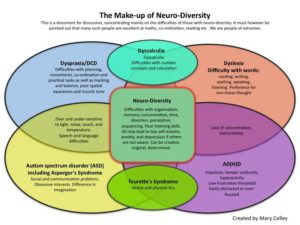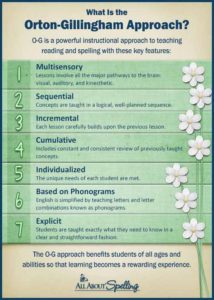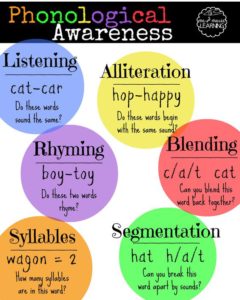No, not another diagnosis. Adding Dyslexia to Apraxia
[wysija_form id=”1″]I had an epiphany the other day. It came after reading an article someone sent me discussing how American schools are failing kids with dyslexia. It was an excellent article and accurate in every way. I started my career in Denver Public Schools in 2004, and at the time, an approach called “whole language” was being used to teach reading. Just four years before this time, in 2000, my mentor (and now Ashlynn’s SLP) was telling me about the 2000 National Reading Panel Results that showed there were 5 components of reading that children needed to read, and whole language was missing many of them, particularly the two that had to do with phonological awareness and decoding.
During my career in Denver, a special education coach named Robert Frantum Allen, came out and was training our intervention and special education staff to look at struggling readers and identify the component of reading in which they were having the most difficulty. I remember the ones that were the most prevalent were in the areas of phonological awareness and decoding. Many teachers weren’t even testing phonological awareness, and since the schools were using a whole language approach, it wasn’t getting taught either.
I was in a Title 1 school, which in some ways is good because we get more funding to get more intervention teachers. We had a great response to intervention system set up, with teachers hired to do 6 week intervention and track data on struggling readers. The interventions included LLI (leveled literacy instruction) and Reading Recovery. These were great programs for our ELL (English Language Learner) students, but for our kiddos who would eventually fall into special education, they weren’t helping at all. I remember Robert stressing to us that these interventions would not remediate our kids with a reading disability (dyslexia) because they did not identify and then focus on the root cause of the issue, which in many cases was phonological awareness. He believed 100% in an approach called Orton Gillingham or approaches based off this reading program. In the school I was at, I had two Kindergarten kids come in with apraxia, and they THRIVED on an OG approach called Fundations. OG has a TON of research and is in many cases considered the gold standard for reading intervention approaches.
At the time, I didn’t have the research to back up Mr. Frantum Allen’s claims, but I had my professional experience which consistently showed our kids with a reading disability did not make growth in these reading intervention approaches; but the kids receiving an OG approach to reading did.
I have never forgotten all the training and professional experience, but a little thing called apraxia kinda took over my life. That is, until I read that article I mentioned above. Everything I learned in DPS came flooding back, especially when I read the line that said one teacher said she didn’t learn how to teach kids how to read until she was trained in Orton Gillingham. It went onto say many are now advocating for a “balanced approach” to reading as opposed to a whole language approach, but basically we are just doing a bunch of things that don’t work with some things that work really well.
In that moment, my dear readers, I had the same gut feeling I had when that SLP told me back when Ashlynn was 2:11 “Laura this is apraxia.”
In that moment, that article told me, “Laura, this is dyslexia.”
I started to cry at the end of that article. Damnit. I missed it again. I missed another OBVIOUS dx in my OWN daughter. Why does this keep happening?? What good was all my training and experience when I’m not applying it to my OWN baby??
Maybe it’s not dyslexia Laura.
Oh no. It is. It IS. How do I know this? Ashlynn participated in a balanced literacy intervention over the summer. She did make progress in some areas, but she just took the test at school and her scores were….the exact same. It changed by 1 point. Didn’t I say I SAW THIS EXACT THING in DPS when I worked there? My kids with reading disabilities didn’t make progress with those approaches. I started thinking about how she still can’t rhyme (despite me working on it constantly), still has trouble identifying how many syllables are in a word (despite clapping them out since preK), has a poor working memory….I mean everything I KNOW she is struggling with correlates with dyslexia. Look at my graphic at the way top. Dyspraxia and Dyslexia and all those neurological disorders overlap. But here we are, my daughter is in 2nd grade, and I’m just NOW seeing the writing on the wall. I think for so long I wanted to explain her problems were based on apraxia. I was totally missing the forest for trees again.
You know what else sucks? Kids who have poor reading skills by 3rd grade usually remain behind until 9th. I remember that chilling statistic because when you work in an inner city, the fear is that by 9th grade if a kid is still struggling academically, they will drop out. Someone will have to put me in a grave first before Ashlynn drops out, but I remember being worried about the 4th and 5th grade kids I had on my caseload at the time.
Oh and this is not to mention we have older adults now who have grown up to talk about apraxia such as Gage GoLightly who says she had dyslexia too, or Daniel Radcliff who had dyspraxia and dyslexia. I know these disorders all have crazy comorbid prevalencies.
So, long story short, is, I have Ashlynn on the 6-8 month wait list for the learning center at Children’s Hospital. Yes the school could test her, but schools don’t dx dyslexia. I know this. I work in one.
I hired a tutor who will come 2x a week trained in OG. I should have done this two years ago, just like I should have had Ashlynn in the right speech therapy a year before I did too. If I can take any solace in any of this, it’s that someone reading my blog will learn from my mistakes. It wasn’t too late for Ashlynn’s speech, and hopefully it’s not too late for her reading either.


